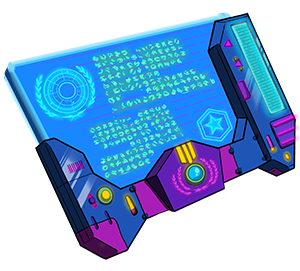Video game localization is a long and complex process, so when you’re ready to break the language barriers and reach new markets with your game, creating a localization kit can help make the journey smoother. A localization kit is an indispensable resource that empowers linguists to adapt games for diverse markets while maintaining consistency and cultural sensitivity.
Together, we’ll delve into the significance of video game localization kits and the essential components they should include to ensure seamless and effective game localization.
The Value of a Video Game Localization Kit
Imagine you’re a linguist tasked with translating a complex game into another language. You’re armed with just the text, devoid of context, visuals, or gameplay experience. This scenario can lead to mistranslations, misinterpretations, and an overall disconnected experience for players.
A localization kit acts as a bridge between developers and linguists, providing the latter with a comprehensive understanding of the game’s intricacies.

By leveraging a localization kit, linguists can work efficiently from within computer-assisted translation (CAT) tools, having access to the necessary context when a string of text generates doubts. This approach enhances accuracy, consistency, and cultural relevancy, ultimately resulting in a more immersive and enjoyable gaming experience for players worldwide.
Key Components of a Localization Kit
Now let’s take a closer look at the vital elements of a localization kit.
- Style guide: A well-crafted style guide sets the tone for the translation. It outlines the target audience, preferred writing style and tone, and even addresses sensitive issues that might arise during localization. This guidance ensures linguistic consistency and alignment with the game’s intended atmosphere.
- Glossary/term base: This resource contains a list of key terms and their approved translations, fostering consistency throughout the game. It can also include prohibited terms and concepts that should remain untranslated to maintain authenticity. If a multilingual glossary is not available, a monolingual list of terms with definitions can also prove to be very helpful.
- Previous translations: If the game is part of a series or franchise, providing previous translations or translation memory data is vital. This ensures uniformity and continuity across different iterations of the game.
- Beta version of the game: Allowing linguists to play a beta version of the game provides them with firsthand experience of the gameplay mechanics, visuals, and overall aesthetics. This immersion aids in producing translations that align seamlessly with the game’s atmosphere. If this is not possible, videos showing the gameplay can also be a helpful reference.
- Game design document (GDD): The GDD serves as a treasure trove of information for linguists. While not created explicitly for localization, it describes the game’s type, style, art, characters, and more. This understanding enables translators to capture the essence of the game accurately.
- Visual assets: Image and videos of gameplay, characters, items, and environments provide invaluable visual context for linguists. This visual aid ensures that translations perfectly align with what the player is seeing on-screen.
- Online query sheet: A centralized platform for resolving queries that arise during translation is essential and it streamlines communication between developers and linguists, leading to quicker and more accurate decisions.

Empowering Game Localization
A video game localization kit is a game-changer in the realm of global game distribution. It bridges the gap between developers and linguists, ensuring accurate and culturally sensitive translations that resonate with players across different languages. While not all components may be available at the project’s inception, striving to provide as much information and context as possible equips linguists to work their magic effectively. As the gaming landscape continues to expand, embracing thorough localization processes and tools like the localization kit can be the key to unlocking success on a global scale.
